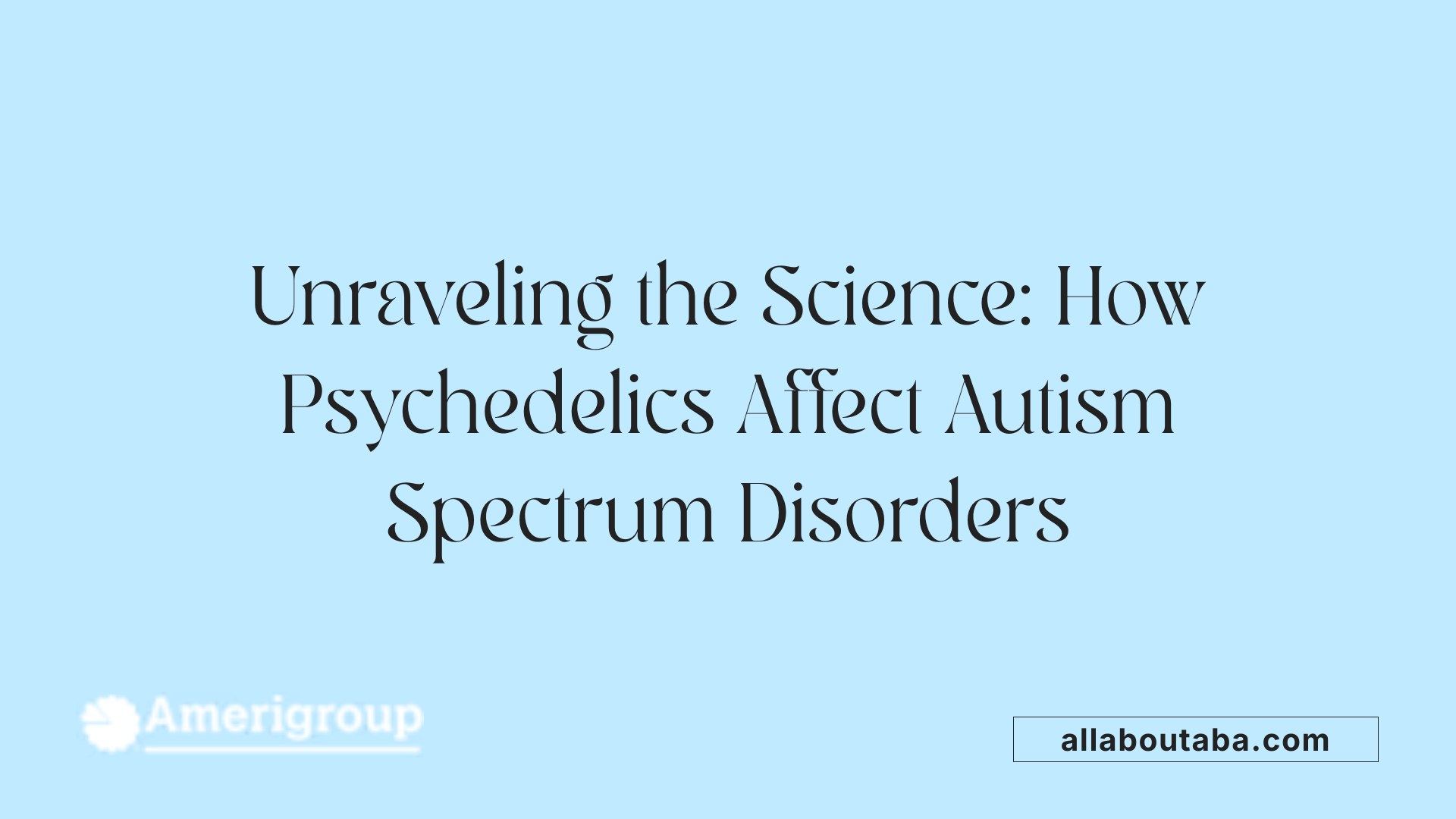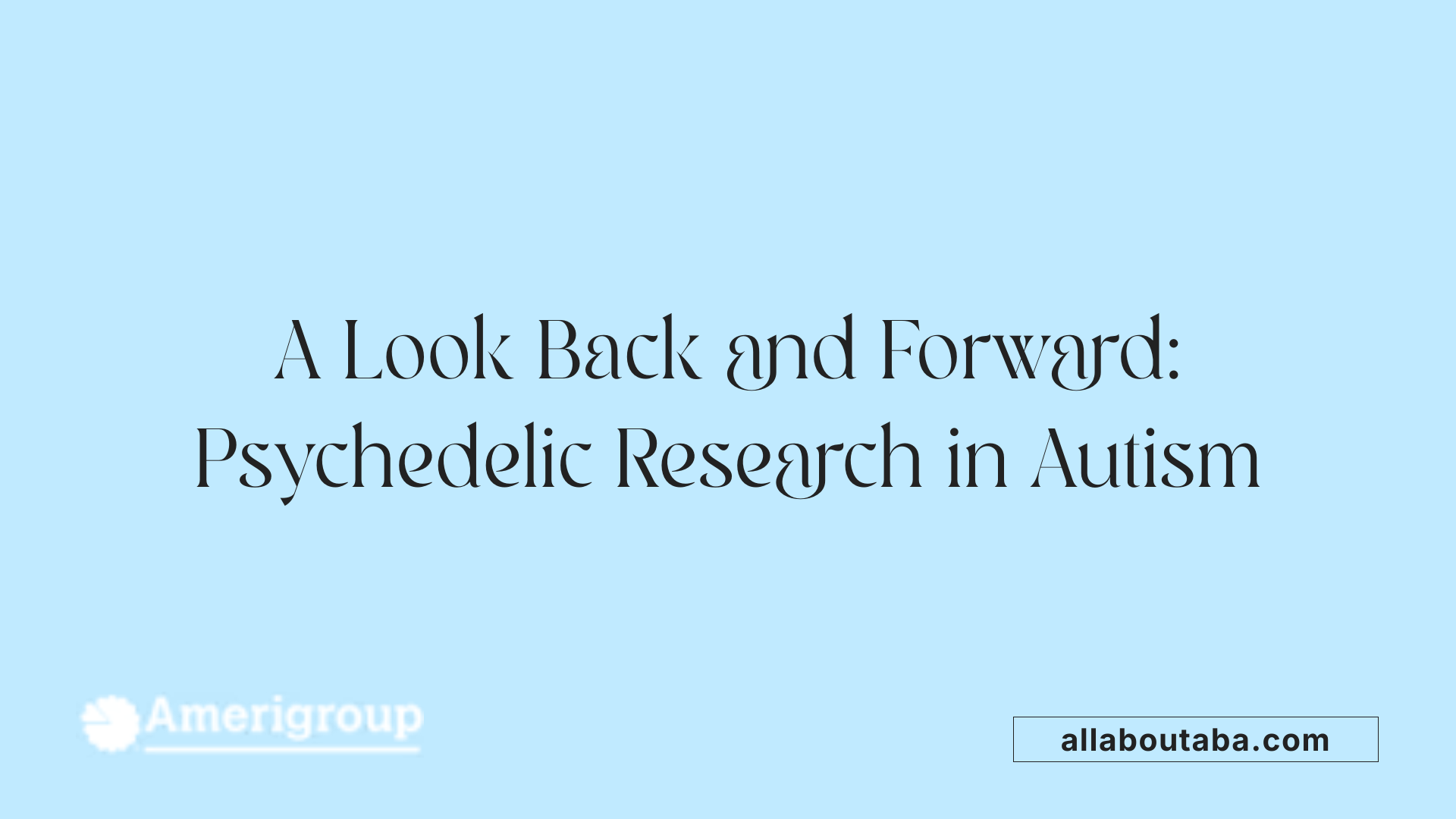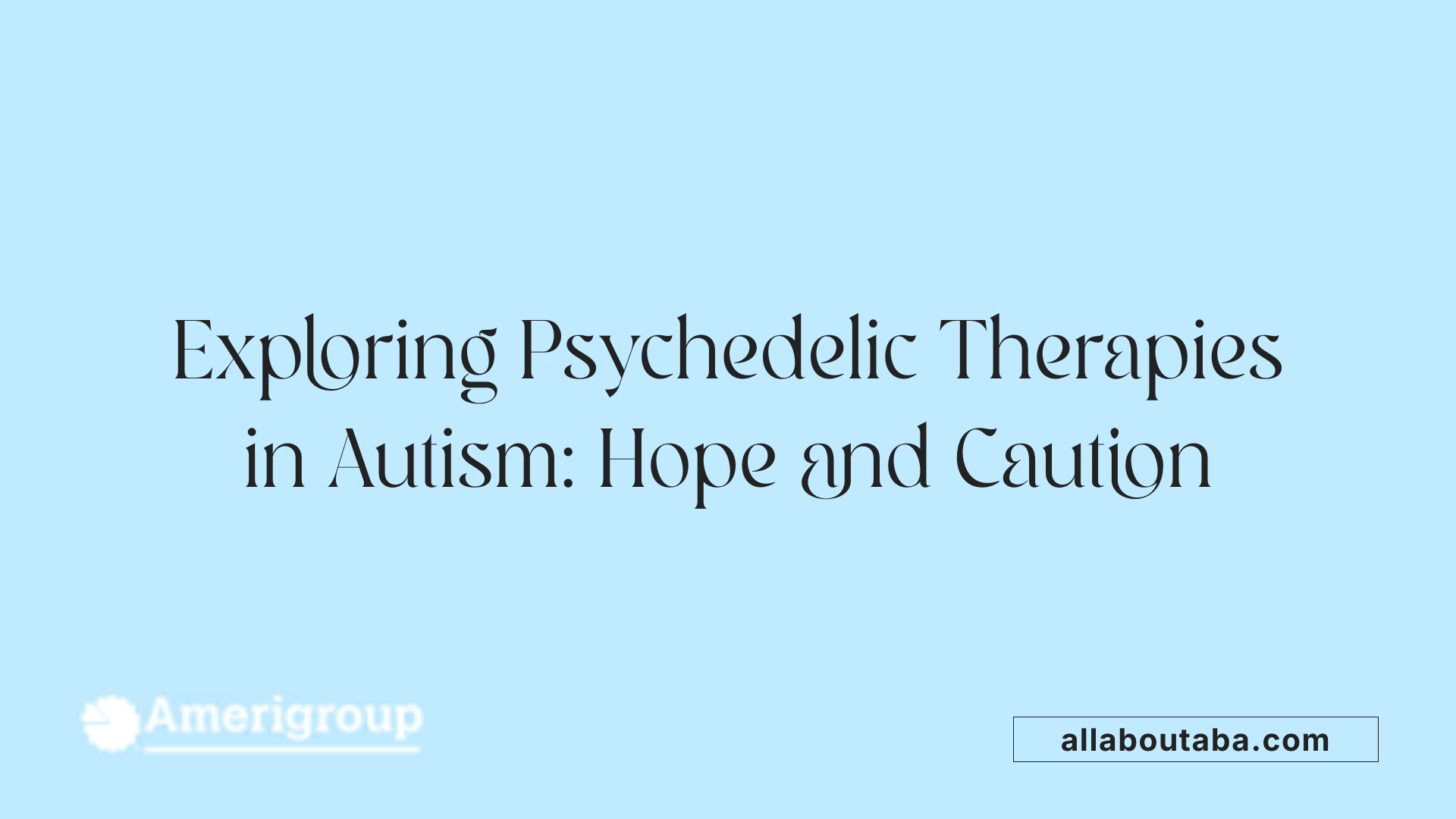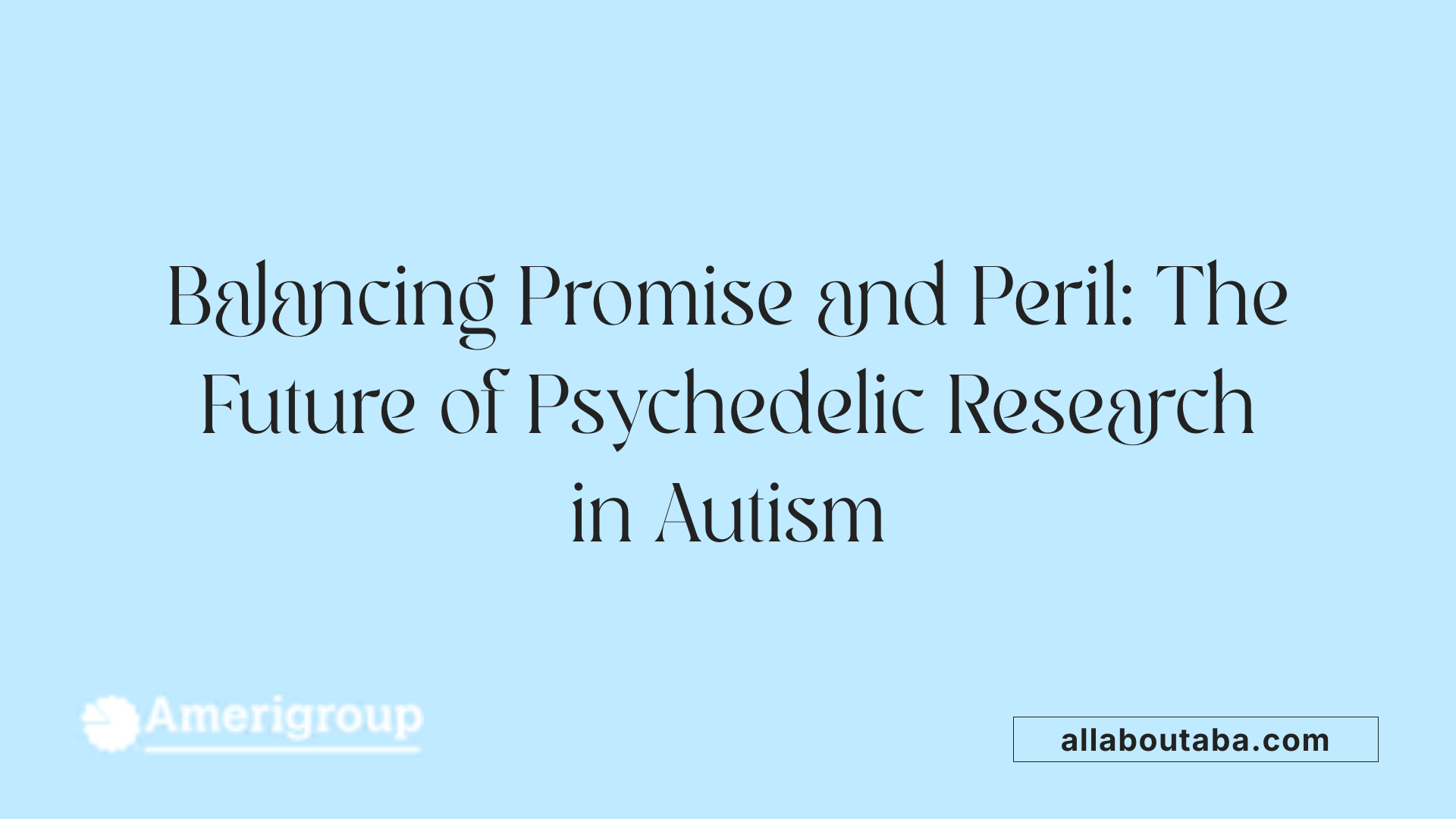Autism And LSD/Psychedelics
Unraveling the Potential and Challenges of Psychedelic Therapy for Autism Spectrum Disorder
Recent scientific advances suggest that psychedelics like LSD, psilocybin, and DMT may influence social behavior, emotional regulation, and neuroplasticity, opening new research avenues for autism spectrum disorder (ASD). While traditional medications manage some behavioral symptoms, they do not address core neurobiological aspects of autism. As the scientific community revisits the therapeutic potential of psychedelics, it is crucial to understand their mechanisms, benefits, risks, and the historical context of this exploration.
Current Scientific Insights and Mechanisms of Psychedelics in Autism

What is the current scientific understanding of the potential relationship between psychedelics and autism spectrum disorders?
Research exploring the connection between psychedelics and autism spectrum disorders (ASD) is still in its early phase. Most existing studies are exploratory, providing preliminary insights rather than definitive conclusions. Evidence suggests that psychedelics such as psilocybin, LSD, and MDMA may help alleviate some co-occurring conditions common in autistic individuals, including social anxiety, depression, and emotional trauma.
Many autistic adults report benefits from psychedelic drugs, with some experiencing reduced psychological distress, increased social engagement, and feelings of emotional connectedness. Animal studies also support these findings, showing positive effects of substances like MDMA on behaviors associated with autism.
However, it’s important to clarify that psychedelics are not cures for autism itself. They do not change the genetic or neurodevelopmental aspects that define ASD. Instead, their potential lies in managing specific symptoms or associated mental health conditions.
Ongoing clinical trials are focusing on understanding how these drugs influence brain function in autistic individuals. Researchers are primarily studying adults without significant intellectual disabilities, given the necessity of informed consent. These studies employ various techniques, like functional MRI (fMRI), EEG, and sensory-processing tests, to monitor brain responses.
While initial findings are promising, the field requires rigorous, controlled research to determine safety, proper dosages, and long-term effects. At present, the consensus is cautious—more evidence is needed before considering psychedelics as a standard treatment for autism. Still, these early studies pave the way for future research into how these substances might be integrated into therapeutic approaches for ASD.
Historical and Preclinical Research: Lessons from the Past and Animal Models

What historical research has been conducted on psychedelics and autism?
During the 1960s and 1970s, researchers explored the potential of psychedelics, especially LSD, for treating autism spectrum disorder (ASD). These early clinical trials involved administering medium to high doses of LSD to children diagnosed with ASD. Some reports indicated improvements in social interactions, mood, and emotional regulation, sparking initial interest in their therapeutic use.
However, these studies also revealed significant adverse effects. Children experienced increased aggression, dissociative sensations, and episodes resembling psychosis. The studies often lacked rigorous controls and were limited in scope, raising concerns about safety and ethical considerations.
Due to these issues, research in this area was largely discontinued. Despite that, early findings contributed to understanding the complex neurobiology of ASD and suggested that psychedelics could influence serotonergic pathways involved in social behavior.
Today, the scientific community is revisiting these possibilities, focusing on newer compounds like psilocybin and DMT that act on the serotonin 5-HT2A receptor, with ongoing preclinical and clinical studies exploring their therapeutic potential. These modern investigations aim to verify safety and efficacy through more controlled and systematic research methods.
What animal model evidence supports psychedelic use for autism?
Preclinical studies using animal models have provided promising data. Researchers have observed that substances like MDMA can improve autism-like behaviors in rodents, including social deficits and repetitive behaviors.
For instance, animal experiments demonstrate that MDMA acts on serotonergic systems, which are often altered in ASD due to lower serotonin levels observed in affected individuals. These studies suggest that psychedelics may influence synaptic plasticity and brain activity in regions related to social cognition.
Preclinical trials help clarify mechanisms and reduce risks before moving to human studies. The evidence from these models supports the hypothesis that psychedelics could enhance social behaviors and reduce anxiety, but they also highlight the need to carefully assess adverse effects and neurobiological differences.
What are the reported therapeutic outcomes and adverse effects over time?
Over the years, both historical and recent research has reported a mix of positive and negative outcomes related to psychedelic use in ASD.
Positive reports include increased sociability, emotional closeness, and reduced anxiety, particularly in small clinical studies or anecdotal surveys involving autistic adults. Modern studies also show promising results, such as rapid treatments for social anxiety with MDMA.
Conversely, adverse effects documented in early trials and some recent cases involve aggression, psychosis, dissociative states, seizures, and mood swings. These adverse events underscore the importance of careful dosing, patient selection, and monitoring.
As ongoing research aims to understand the neurobiological basis of possible benefits, safety evaluations remain a priority. Ultimately, well-designed controlled trials are essential to determine whether psychedelics can be safely integrated into ASD therapy.
| Aspect | Findings | Additional Notes |
|---|---|---|
| Historical outcomes | Some positive behavioral changes | Limited by design and safety concerns |
| Animal model evidence | Improved social and repetitive behaviors | Focus on serotonin pathways |
| Adverse effects | Aggression, psychosis, seizures | Need for cautious application |
| Current research | Promising but preliminary | Ethical and safety considerations remain crucial |
This evolving landscape aims to balance promising therapeutic signals with necessary safety protocols, informing future clinical practices.
Therapeutic Potential and Current Clinical Trials

Are there any potential therapeutic applications of psychedelics for individuals with autism?
Recent surveys and anecdotal reports from autistic individuals indicate that psychedelics such as LSD, psilocybin, and MDMA could offer therapeutic benefits. Many autistic self-advocates have shared positive experiences, including reductions in social anxiety and psychological distress, increased feelings of connection, and emotional clarity. For example, a survey involving 233 autistic adults highlighted perceived benefits like improved social interactions and mood.
Clinical and preclinical studies further support these observations. Some early trials in children with autism reported increased sociability, emotional bonds, and reduced aggressive behaviors after psychedelic treatments. Additionally, a small 2018 pilot study demonstrated that MDMA led to rapid and lasting improvements in social anxiety among autistic adults.
Research at institutions like King’s College London is actively investigating how low doses of psilocybin influence sensory processing and brain activity in autistic versus neurotypical individuals. These studies aim to clarify how psychedelics modulate neural pathways involved in social and emotional functioning.
Despite promising signs, there are important caveats. Many early studies reported adverse effects such as aggression, dissociation, and mood swings. Neurobiological differences in autism, such as altered serotonergic signaling and synaptic function, may impact how psychedelics work and their safety profiles.
The growing body of research emphasizes cautious optimism, with ongoing trials focused on autistic populations without intellectual disabilities, as safe and effective treatments could potentially extend to broader groups. Overall, psychedelics hold future promise for addressing some challenges faced by individuals with autism, but comprehensive research is still needed to establish safety and proper therapeutic protocols.
Risks, Ethical Considerations, and the Future of Psychedelic Research in Autism

What are the potential benefits and risks of using psychedelics for people with autism?
Recent scientific studies and anecdotal reports suggest that psychedelics like LSD, psilocybin, and MDMA might offer certain benefits for individuals with autism. These substances have shown potential to enhance social interactions, increase feelings of empathy, and help reduce symptoms of anxiety and depression. For example, some autistic adults have reported feeling more engaged socially and experiencing less emotional distress after using these compounds.
These drugs work primarily by activating the serotonin 5-HT2A receptor, which influences brain regions involved in social cognition and how we process emotions. Modulating these neurological pathways could possibly address some core autism traits such as social deficits or repetitive behaviors.
However, the use of psychedelics is not without serious risks. Adverse effects like psychosis, dissociation, increased aggression, seizures, and mood swings have been documented, especially in sensitive populations. Early clinical trials involving children with autism reported some positive behavioral improvements but also noted problematic side effects such as aggression and dissociative states.
Because autism neurobiology involves complex systems like serotonergic signaling, synaptic function, and prefrontal cortex activity, responses to psychedelics can vary greatly between individuals. Limited controlled research means that potential benefits remain speculative and not guaranteed.
In summary, while the development of psychedelic therapy for autism shows promise, it is important to proceed cautiously. More extensive, controlled clinical trials are necessary to confirm safety and effectiveness. Currently, most studies are preliminary, and the neurodivergent community’s ethical and safety concerns must be at the forefront of future research initiatives.
Looking Ahead: Navigating the Promise and Perils of Psychedelic Research in Autism
The renewed interest in psychedelics offers promising avenues for understanding and potentially alleviating some symptoms associated with autism spectrum disorder. However, the history of adverse effects, coupled with the complex neurobiological underpinnings of ASD, underscores the necessity of cautious, rigorous research. Future studies must prioritize safety, ethical inclusion of neurodiverse voices, and a nuanced understanding of individual differences. As the scientific community continues exploring these potent compounds, the ultimate goal remains to improve quality of life without compromising safety or ethical standards.
References
- Evaluating the Potential Use of Serotonergic Psychedelics in Autism ...
- Could psychedelic drugs improve the mental health of autistic people?
- Tripping over the potential of psychedelics for autism - The Transmitter
- Flashback to the 1960s: LSD in the treatment of autism - PubMed
- Psychedelics and Pro-Social Behaviors: A Perspective on Autism ...
- Could psychedelic drugs improve the mental health of autistic people?
- Psychedelic-Assisted Therapy for Social Adaptability in Autistic Adults
- The 'PSILAUT' protocol: an experimental medicine study of autistic ...
- Medication Treatment for Autism | NICHD
- Medicines for Treating Autism's Core Symptoms
Other articles
Recent articles

How Schools Can Support Autistic Students In Career Prep

Best Strategies For Autism-Friendly Event Planning

Understanding Noncontingent Reinforcement In Autism Behavior Plans

How Drama Therapy Benefits Autistic Individuals

Best Practices For Autism-Friendly Fitness And Recreation Centers

Best Ways To Promote Healthy Social Media Use For Autistic Teens

How To Help Autistic Children Cope With Public Speaking

Autism And Strategies For Managing Unexpected Changes

Best Podcasts About Autism For Parents And Educators

Autism And The Impact Of Seasonal Changes On Behavior

The Role Of Diet In Managing Co-Occurring Conditions With Autism

Sleep Challenges In Autism And Practical Solutions

Best Ways To Build Daily Routines For Autistic Children

Best Practices For Supporting Autistic Entrepreneurs

Autism And Strategies For Navigating Large Social Gatherings

Adaptive Sports And Recreational Activities For People With Autism

Autism And The Benefits Of Story-Based Learning Activities

Understanding The Role Of Play In Autism Development

Autism And The Impact Of Environmental Noise On Learning

How To Create Autism-Friendly Community Spaces

Autism And Chronic Health Conditions: What To Know

The Role Of Care Managers In Autism Life Planning

How To Teach Social Boundaries To Autistic Children

How Autistic Individuals Experience Empathy Differently

How To Support Autistic Employees In Remote Work Settings

Autism And The Relationship Between Motor Skills And Learning

How To Create Community Resource Guides For Autism Families

How To Teach Daily Living Skills To Autistic Teens

Autism And The Impact Of Mind-Body Practices On Stress Reduction

Autism And The Benefits Of Outdoor Group Activities

How To Create Autism-Friendly Sensory Paths In Schools

Best Practices For Autism-Friendly Park And Recreation Areas

Autism And Strategies For Reducing School Refusal

Supporting Autistic Individuals In Public Speaking

The Role Of Diet In Managing Autism Symptoms

The Benefits Of Gardening Clubs For Autism Social Development

How To Prepare Autistic Children For Dental Visits

Autism And Employment: Career Paths That Work

Best Practices For Autism-Friendly Hotels And Lodging

The Impact Of Screen Time On Autism Development

Autism Screening Tools For Early Childhood

The Role Of Physical Exercise In Autism Therapy

Best Strategies For Supporting Autistic College Students

The Role Of Technology In Autism Early Detection

Sensory-Friendly Classroom Design Ideas For Autistic Students

The Role Of Speech Therapy In Building Social Communication Skills

Best Strategies For Handling Autistic Burnout In Adults

Autism And The Importance Of Predictability In Routine

Autism And Peer Education: Teaching Acceptance In Schools

Best Practices For Sensory-Friendly Libraries And Reading Rooms

Self-Advocacy Skills For Autistic Adults

The Role Of Technology In Autism Peer Communication

Promoting Physical Activity In Children With Autism

How To Prepare Autistic Children For Medical Procedures

The Role Of Social Media In Autism Advocacy And Awareness

The Impact Of Sensory Rooms In Public Facilities For Autism

How To Create An Autism-Friendly Holiday Celebration

Best Practices For Inclusive Education For Autistic Students

Autism And Mental Health: Recognizing Signs Of Distress

Best Practices For Sensory-Friendly Waiting Rooms

The Role Of Teachers In Early Autism Red Flag Identification

Autism-Friendly Housing Design Features

Autism-Friendly Housing Design Features

How Environmental Modifications Improve Autism Outcomes

Autism And Technology-Based Learning Tools

Supporting Autistic Children Through Changes In Routine

The Link Between Autism And Working Memory Challenges

Best Practices For Autism-Friendly Cooking Classes

Autism And The Benefits Of Structured Music Lessons

Best Books To Teach Kids About Autism Acceptance

Sensory Diets And Their Benefits For Autism Management

How To Prepare Autistic Teens For Driver’s Education

How To Teach Autistic Teens About Healthy Relationships

The Role Of Visual Prompts In Building Daily Habits For Autism

Addressing Sleep Regression In Children With Autism

Understanding Social Stories And How They Help Autistic Children

Navigating Insurance Coverage For Autism Therapy Services

How To Prepare Autistic Adults For Independent Travel

Supporting Autistic Individuals In Volunteer Work

How Mindfulness Practices Can Support Autism Well-Being

Understanding Hyperfocus And Special Interests In Autism

Understanding Stimming As A Self-Regulation Tool

Sensory-Based Interventions For Autism At Home

Best Ways To Introduce Self-Advocacy In Autistic Teens

Best Ways To Support Autistic Employees In Customer Service Roles

Best Practices For Autism-Friendly Volunteer Programs

Autism And The Benefits Of Sensory Play For Emotional Growth

Autism And Strategies For Building Peer Relationships

Understanding How Autism Affects Memory Processing

Autism And Strategies For Building Coping Skills In Teens

The Role Of Parent Training In Autism Intervention Programs

Autism-Friendly Workplace Accommodations

Using Visual Timers For Autism Time Management

What Is ABA Therapy?

Autism and Sleep

Do Plastic Toys Cause Autism?

Autism Facial Expressions

Autism and Motor Skills

Which Parent Carries The Autism Gene?

Autism Symbols & Colors
We’re All About You, Your Family, and Your Child

